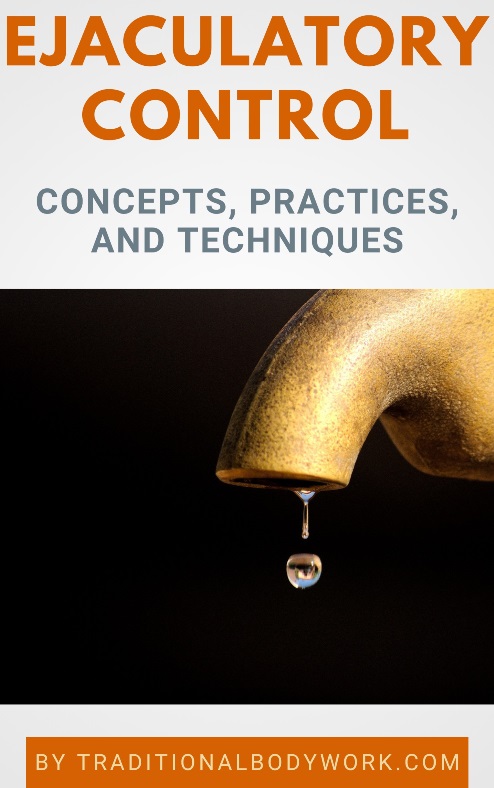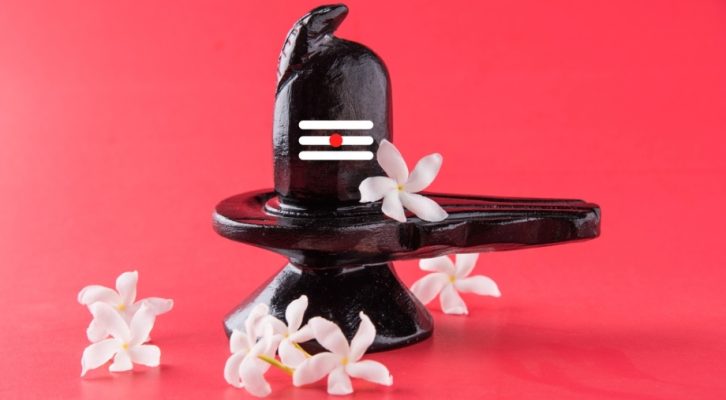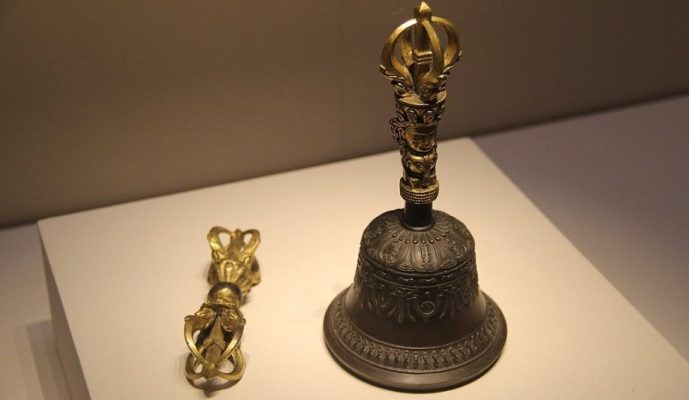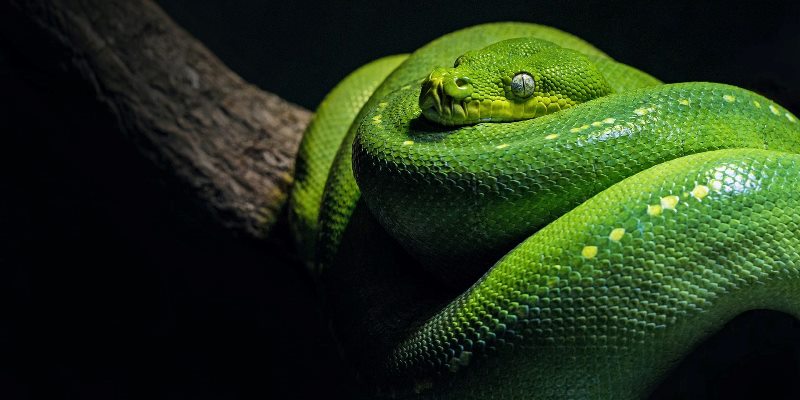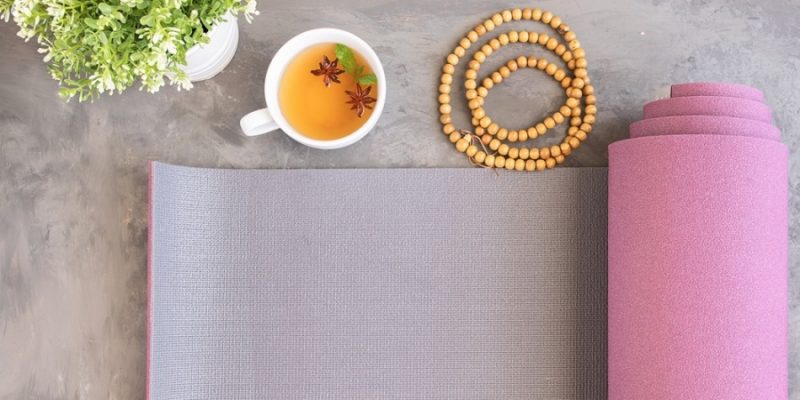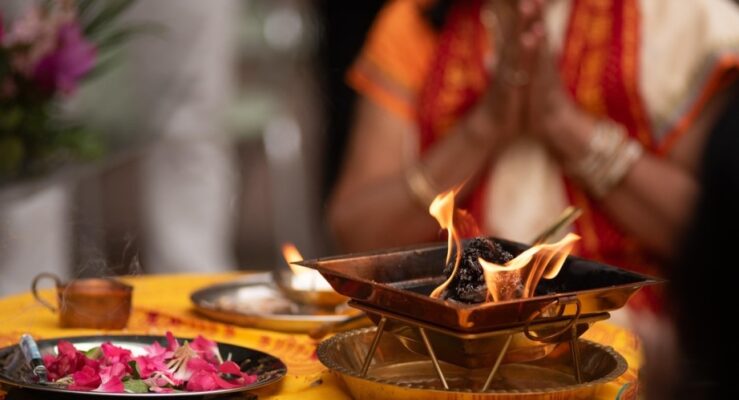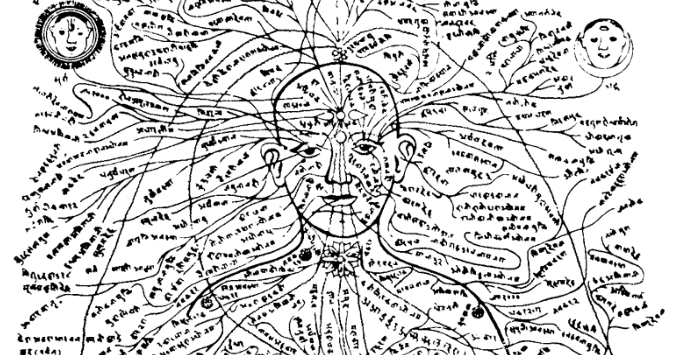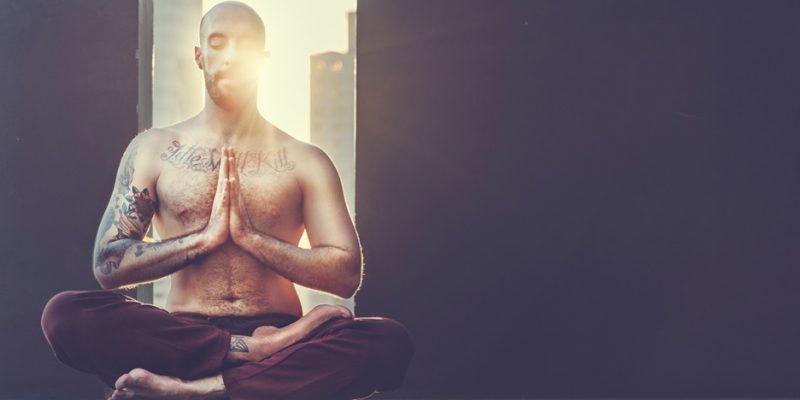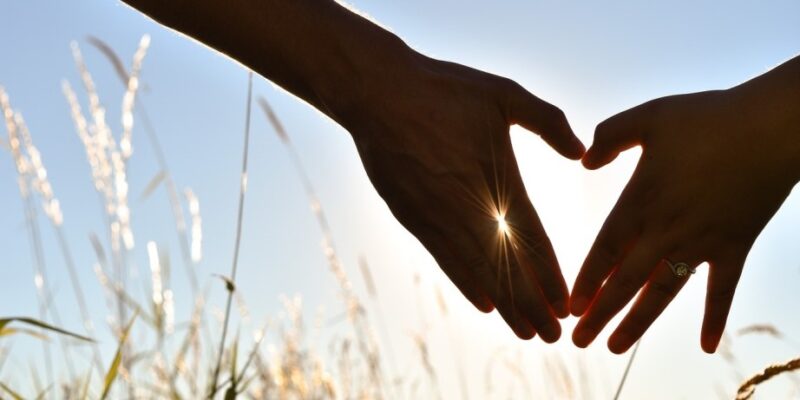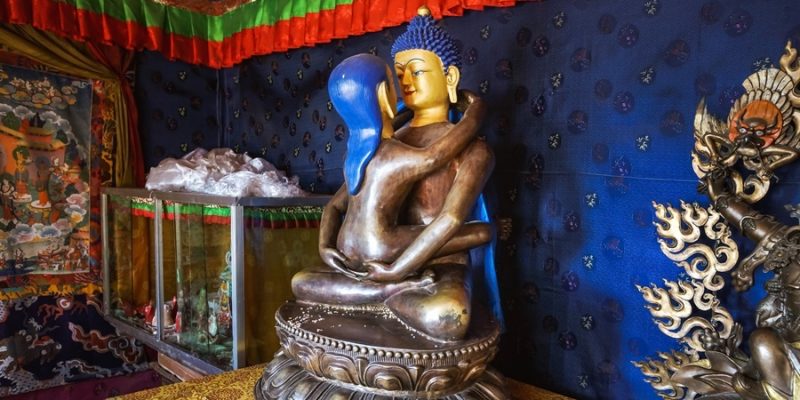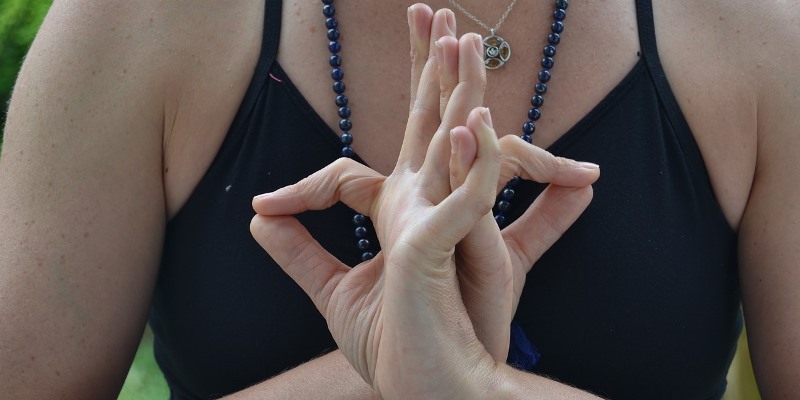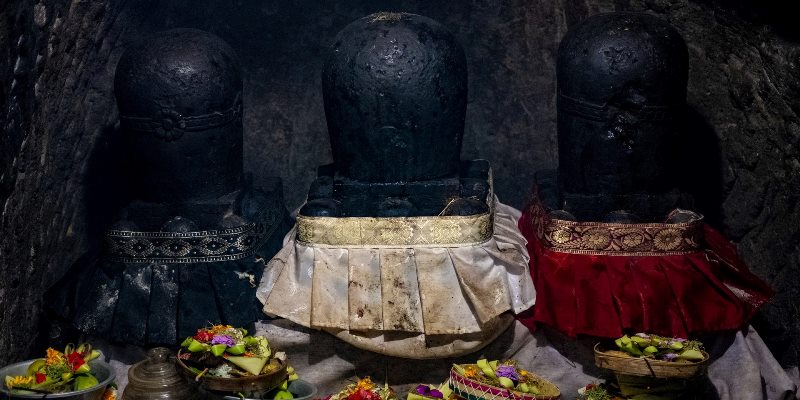
The Linga Mudra is an exercise in Yoga, and named after the Linga (Lingam or Lingham). Or perhaps more accurately — it’s named after the Hindu Deity Lord Shiva who — on the material Earth level — is represented by the Linga symbol.

Hence, the name of this mudra is also known as Shiva Linga Mudra. By the way, a Yogic mudra is a hand gesture that’s integrally carried out together with one or more Yogic poses and Yogic breathing techniques.
There are several techniques to perform the Linga Mudra. As a general rule, one would sit on the floor with the legs crossed (either in the Padmasana or Sukhasana pose), although the mudra gesture can also be done standing. Subsequently, one would clasp the hands together with interlaced/interlocked fingers while pointing one thumb up (see the lead image of this post) or alternatively pointing both thumbs up. The upright thumb(s) obviously represent(s) the erect phallus (male Lingam symbol), the oval shaped clasped hands represent the womb/ground (female Yoni symbol).
You’ll also find another technique, which actually somewhat more accurately represents the Linga symbol (typically found in the form of smaller or larger statues/sculptures in India and in many other countries in Southeast Asia). To be more precise, these statues represent the sacred Linga-Yoni unity (male-female energy unity), which is usually depicted as a cylindrical pillar-shaped structure standing upright within a round or disc-shaped platform (see the image below). The pillar represents the Lingam and the round platform/holder represents the Yoni.
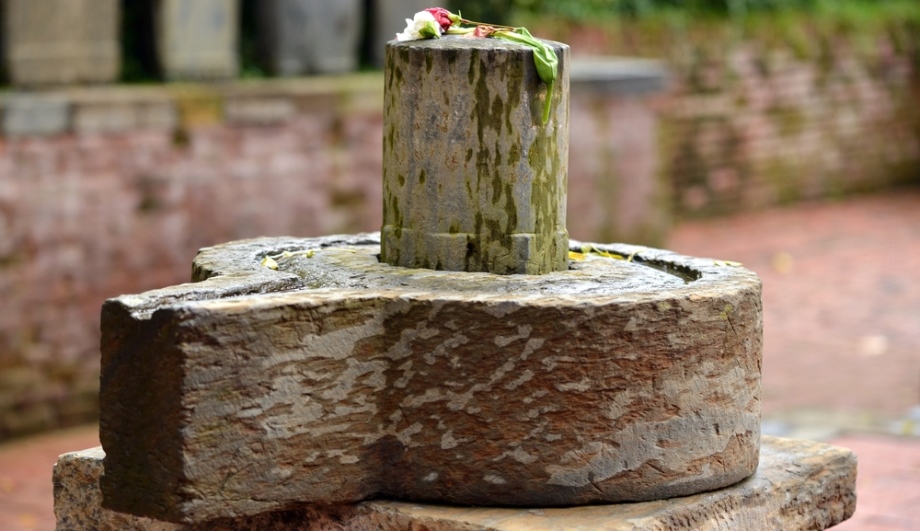
So, sometimes the Linga Mudra technique is also carried out in a way that more literally symbolizes the Lingam-Yoni statues; that is, one hand then gestures a fist with a thumb pointing upwards (the Shiva Linga) while the hand/fist is placed on the open palm of the other hand (the Shakti Yoni). You can see that particular Linga Mudra technique in the image below.
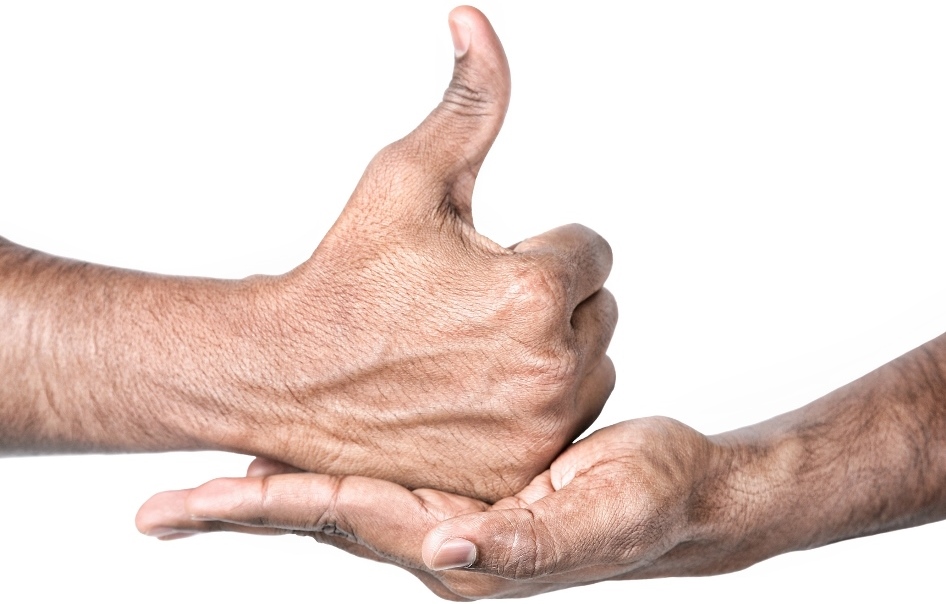
One of the most important health benefits of this mudra is that it creates heat in the body and balances the internal Fire Element. It’s why this Yogic gesture also carries the names “Gesture of Fire” and “Heat Gesture.” Apart from these alternative names, Linga Mudra is also known as the “Upright Mudra” or “Upright Seal,” which is an association with the thumb (Linga/Phallus) pointing upwards/upright.

At any rate, appropriate internal body heat is thought to fight infections (such as common colds, sinusitis, and lung infections) and promote healthy digestion/metabolism. In addition, it’s said to raise oxygen levels and energize the body, stimulate the respiratory system, expulse bodily waste products, stimulate weight loss, combat laziness and lethargy, alleviate stress and anxiety, strengthen focus and clarity of the mind, and enhance sexual health both in men and women. Apart from these structural health benefits, the Linga Mudra technique can also be used punctually when one feels cold, simply in order to get one’s body warm.
However, there are some contraindications that need to be taken into account. For instance, doing the Linga Mudra is not advised for pregnant women, for those who suffer from high blood pressure, a recent stroke or migraines, or are currently over-excited and nervous. Mind also that one should avoid activities that increase body temperature after having done this exercise.
Advice with regard to when and for how long to practice this technique varies significantly. Some advise to do Lingam Mudra daily in the morning or alternatively in the evening, only five to fifteen minutes per day or alternatively half an hour to forty-five minutes.
In addition, there are quite some variations taught as for the number of repetitions and holds, and the specific accompanying Yogic breathing techniques i.e. Pranayamas, and visualizations, affirmations or chants that one should (or could) utilize while performing Linga Mudra.



